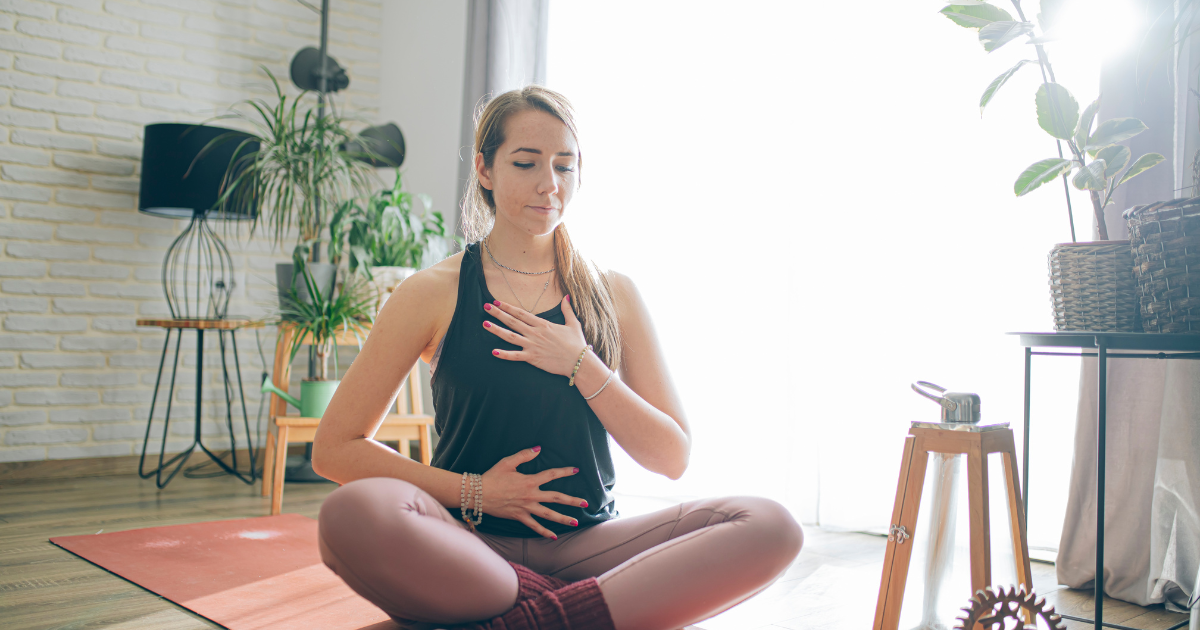7 Tips for Living With Chronic Pain
- Understanding Chronic Pain: Chronic pain lasts beyond the typical healing time, affecting daily life and mental well-being. Types include musculoskeletal, neuropathic, arthritis, and headaches.
- Treatment Options: Effective management often requires a combination of treatments, including medications, alternative therapies, physical therapy, mind-body approaches, and non-invasive solutions like LUMINAS Pain Relief Patches.
- Daily Tips for Pain Relief: Learn how different tips including pacing activities, diet, staying active, and building a support group can help you feel more in control of your pain.
- Empower Your Pain Relief: For non-invasive, drug-free pain management, LUMINAS Pain Relief Patches can be a valuable addition to your pain management toolkit, helping you reclaim comfort and quality of life.

- Chronic musculoskeletal pain:
This pain affects the muscles, bones, and joints. Conditions that fall into this catergory include:- arthritis
- fibromyalgia
- chronic back pain
- Neuropathic pain:
This occurs when there is damage to the nervous system. It can result in diabetic neuropathy, where nerve damage from diabetes causes pain, particularly in the legs and feet. - Chronic headaches:
Persistent headaches, including tension headaches, migraines, or cluster headaches, are a form of chronic pain. - Arthritis:
This is caused by inflammation in the joints and is common in conditions like:- osteoarthritis
- rheumatoid arthritis.
- Chest pain and stomach pain:
Certain conditions, like heart disease, stomach ulcers, and digestive disorders, can cause long-term discomfort in the chest or abdomen.
- Medication Options:
Nonsteroidal anti-inflammatory drugs ( NSAIDs) and pain relievers are commonly used for short-term relief, though long-term use should be managed by a doctor. Opioid therapy may be used for severe cases, but it carries a risk of addiction and is typically used as a last resort. - Alternative Medicine:
Techniques like massage therapy, acupuncture, and chiropractic care fall under complementary and alternative medicine. These methods may decrease pain without the need for medications. - Physical Therapy:
Working with physical therapists can help improve mobility, especially for chronic back pain and hip pain. Therapy helps strengthen muscles around painful joints and reduces musculoskeletal pain. - Mind-Body Therapies:
Relaxation techniques like meditation and yoga can lower stress, reducing the emotional impact of pain. For those with generalized anxiety disorder or depression linked to pain, psychological therapies can offer relief. - Non-Invasive Pain Relief Patches:
LUMINAS Pain Relief Patches provide targeted relief from pain using electron technology. Unlike oral medications, these patches offer a safe, drug-free way to ease pain and ease discomfort for hours.
- Break large tasks into smaller steps and schedule short breaks in between each one.
- Setting a timer can also remind you to pause for a quick stretch or rest, especially if you’re working on lengthy projects.
- deep breathing
- meditation
- mindfulness
- Practice deep breathing by inhaling for a count of four, holding for four, and exhaling for four to quickly lower stress.
- Try using meditation apps or mindfulness exercises that help you redirect focus away from pain.
- Keeping a journal can also help, allowing you to record positive moments to balance out the challenging aspects of each day.
- Adjust your chair and desk to ensure good posture, and use cushions or footrests if needed.
- Try to keep essential items within reach to reduce bending or straining, and position your computer screen at eye level to avoid neck strain.
- Incorporate anti-inflammatory foods into your meals, and consider keeping a food journal to track how different foods impact your pain levels. Anti-inflammatory foods include:
- spinach
- turmeric
- salmon
- Avoid known triggers like sugary or highly processed items, and drink plenty of water to stay hydrated.
- Seated Forward Bend: Excellent for gently loosening the lower back and hamstrings.
- Sit comfortably in a chair with your feet flat on the floor and knees hip-width apart.
- Take a deep breath, lengthening your spine as you sit up tall.
- As you exhale, slowly bend forward from your hips, reaching your hands toward your shins or the floor.
- Let your head and neck relax as you stretch, stopping if you feel any pain.
- Hold for 10–15 seconds, then slowly return to an upright position.
- Set up a calming nighttime routine—dimming the lights, listening to soft music, and avoiding screens at least 30 minutes before bed.
- Practicing progressive muscle relaxation, where you tense and release muscles one at a time, can also signal to your body it’s time to wind down.
Key Takeaways
Living with chronic pain can feel overwhelming, but you’re not alone in seeking ways to make life easier. From managing musculoskeletal pain to easing joint pain, there are ways to make each day a little easier. Whether you’re dealing with chronic back pain, neck pain, or chronic low back pain, the right steps can help you get back to doing the things you love.
In this blog, we’ll explore seven simple tips for managing pain, improving your quality of life, and reducing discomfort. Along the way, we’ll also show how LUMINAS Pain Relief Patches offer a non-invasive, drug-free solution to help you feel better and take control of your pain.
What Is Chronic Pain?
Chronic pain is any pain that lasts longer than the usual recovery period for an illness or injury, usually more than 3 to 6 months. Unlike acute pain, which is temporary and goes away as your body heals, chronic pain persists and can significantly affect your daily life. It can stem from various health conditions and may involve the central nervous system, including the brain and spinal cord.
Chronic pain can interfere with sleep, work, and even your emotional well-being, making it harder to enjoy life. Common types of chronic pain include:
Chronic Pain Treatments
Managing chronic pain often involves a combination of treatments to address both the physical and emotional effects of pain. Here are some common approaches:
7 Tips for Living with Chronic Pain
While understanding the types and treatments of chronic pain can provide clarity, putting practical strategies into action is essential for daily comfort and control.
Here are seven simple, effective tips to help you live more comfortably with chronic pain and improve your quality of life.
1. Embrace Your Own Pace
One of the most important things to remember is to listen to your body. Pain signals are your body’s way of telling you to slow down. By pacing yourself, you can avoid making your pain level worse. If you feel muscle tension or persistent pain, take a break.
On days when your pain is particularly bad, consider trying LUMINAS Pain Relief Patches. Our patches help control pain and provide help for chronic pain without needing to take pain medicine or rely on nonsteroidal anti-inflammatory drugs.
2. Master Your Mindset
Your mindset plays a big role in how you handle chronic pain management. Stress management is key, as stress can make pain disorders feel worse. Relaxation techniques like deep breathing, meditation, and mindfulness can help reduce anxiety and ease your pain.
Techniques that can help reduce anxiety and ease pain include:
Tips:
If you struggle with generalized anxiety disorder or depression due to your pain, consider talking to a mental health professional. Finding ways to cope with stress will also help you manage chronic pain better.

3. Ergonomics and Lifestyle Adjustments
Where you live and work can have a big effect on your pain. If you’re spending a lot of time sitting or standing, make sure your space is comfortable. Using chairs that support your back or standing on cushioned surfaces can help reduce chronic back pain and hip pain.
While improving your environment, you can also use LUMINAS Pain Relief Patches. Our patches can help relieve pain in your back, legs, or wherever you feel discomfort. By using LUMINAS patches, you can keep going without being slowed down by your pain.
4. Fuel for Function
The food you eat plays a big part in your pain levels. Certain foods, like processed meals, can make inflammation worse and cause chronic musculoskeletal pain. Instead, focus on eating foods that reduce inflammation like leafy greens, berries, and fish rich in omega-3s.
By adding these foods to your diet, you can help reduce pain naturally. When combined with pain management patches like LUMINAS, you’ll have even more tools to feel better.
5. Active, But Not Overactive
Staying active can help keep your pain under control. Gentle exercises like walking, stretching, and yoga can make a big difference in easing chronic low back pain and neck pain. These movements help improve blood flow and reduce stiffness. Try incorporating the following:
Begin with short, gentle movements, such as a daily 10-minute walk and light stretches to loosen tight areas, like the Seated Forward Bend:
Gradually increase activity duration based on your comfort level, always being mindful not to push yourself too hard.
6. Reconnect with Relaxation
Quality sleep and relaxation are also key for long-term pain management. Poor sleep can make pain worse, while a good night’s rest can help you heal and recover. Try creating a bedtime routine that helps you relax, like deep breathing, meditation, or reading a book before bed.
When pain keeps you from sleeping, consider using LUMINAS Power Sleep Patches. Our sleep patches can help you experience a deeper, more restorative sleep, allowing you to wake up feeling more refreshed.
![]()
7. Build Your Support System
Having a support system is important when living with chronic pain. Whether it’s friends, family, or even a pain management specialist, talking to others who understand what you're going through can provide emotional support.
Connect with others who understand your challenges by joining support groups, either locally or online, and make time to talk with trusted friends or family members. They can offer emotional support and encouragement, which is invaluable when dealing with long-term pain.
Remember that pain relief isn’t just about medicine—it’s about finding what works for you. LUMINAS Pain Relief Patches can be part of your pain relief plan, helping you manage your pain alongside support from those around you.
Take Control of Your Pain
Living with chronic pain can be hard, but it doesn’t have to take over your life. By trying these tips, you can manage chronic pain, improve your quality of life, and feel more in control. From pacing yourself to getting the right rest and nutrition, every little step helps. And for those extra tough days, LUMINAS Pain Relief Patches provide non-invasive, drug-free relief, so you can get back to doing the things that matter most.
Ready to take a proactive step toward pain relief? Try LUMINAS Pain Relief Patches today and experience how this simple, effective solution can make a difference in your daily comfort and well-being.









